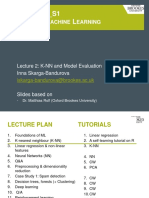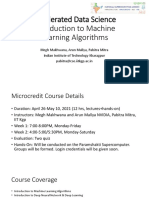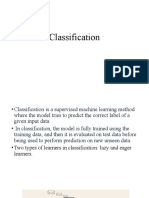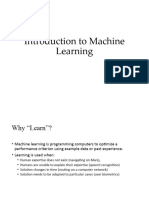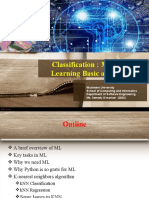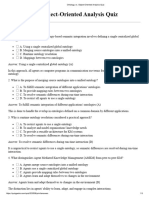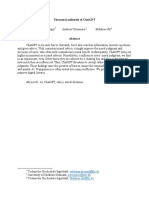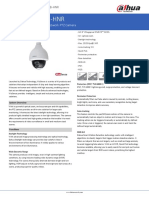0% found this document useful (0 votes)
14 views90 pagesLecture 2 Final
The document discusses machine learning concepts including classification, K-nearest neighbors algorithm, and data collection and preparation. It provides examples and explanations of classification tasks, prediction error, performance measures, and the stages of machine learning.
Uploaded by
somsonengdaCopyright
© © All Rights Reserved
We take content rights seriously. If you suspect this is your content, claim it here.
Available Formats
Download as PDF, TXT or read online on Scribd
0% found this document useful (0 votes)
14 views90 pagesLecture 2 Final
The document discusses machine learning concepts including classification, K-nearest neighbors algorithm, and data collection and preparation. It provides examples and explanations of classification tasks, prediction error, performance measures, and the stages of machine learning.
Uploaded by
somsonengdaCopyright
© © All Rights Reserved
We take content rights seriously. If you suspect this is your content, claim it here.
Available Formats
Download as PDF, TXT or read online on Scribd
/ 90


